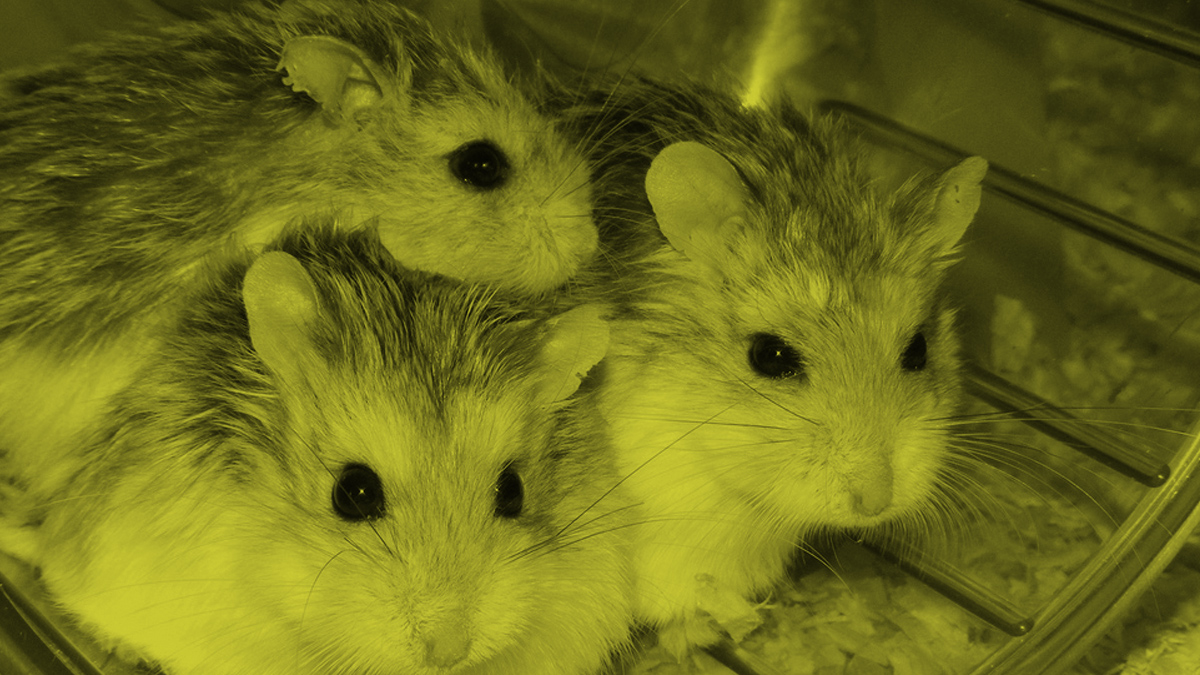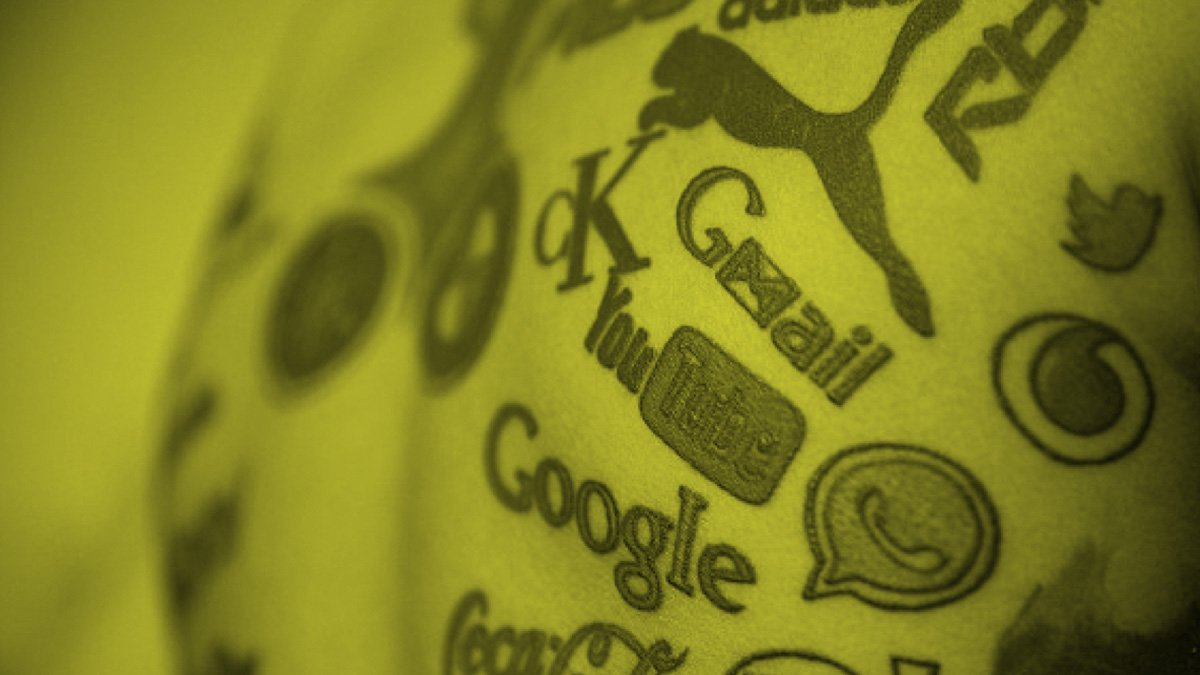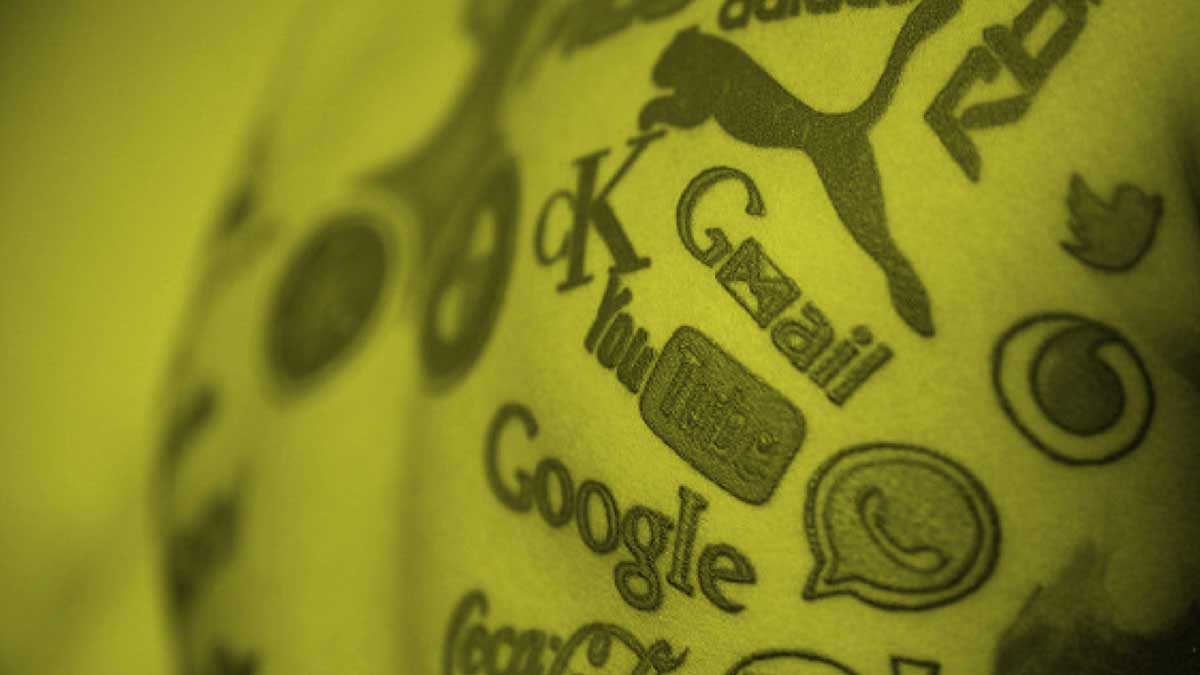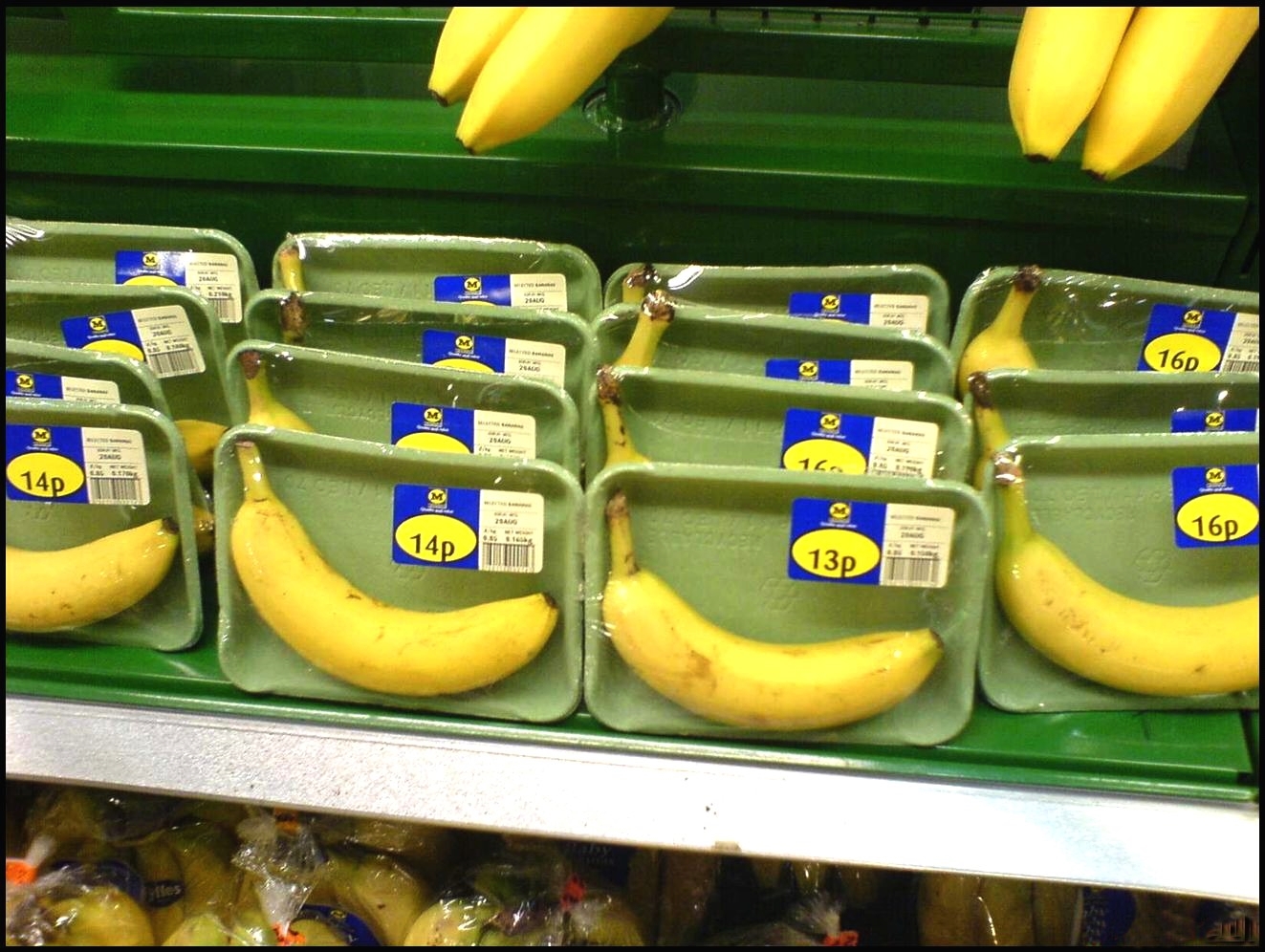All The Feels
Branding 101: When you speak to someone’s emotional center rather than their logical mind you solicit a response that is stronger, deeper, longer-lasting and primal.
Recently, I worked with a client who specializes in shipping stuff to and from Latin America. Experts in Third Party Logistics. Their competition’s websites are full of online calculators for weights, fees, dates, lists of countries. Lots of data. My client’s website is not. Their website talks about things like how it feels when your boss congratulates you for hitting that impossible shipping deadline.
In the book “Brand Immortality: How Brands Can Live Long and Prosper”, the authors analyzed 1400 case studies of advertising campaigns. They found that campaigns with purely emotional content almost doubled the performance of ads with only rational content. 31% vs. 16%. We act on what we feel. Not what we think.
When you speak to someone’s emotional center rather than their logical mind you solicit a response that is stronger, deeper, longer-lasting and primal.
That’s why I always counsel my clients on how critical it is to know their customers motivation. Not only what functional problem they want solved, but how they want to feel when that happens.
Because the feeling is what they are seeking. Security, joy, safety, recognition. If you can describe and deliver the feeling, the mind will follow.
photo credit: Alk3r@flickr.com
Video Is The New Black
It's estimated that 80% of all content consumed on the web will be video by 2020. To the entrepreneur, brand owner or creative professional, “video is the new black”. The once nice-to-have is now a requirement to remain competitive.
When I was 11, I filmed an epic disaster movie in my basement on a Super 8mm camera. It was called “Ball!”, and told the story of a Godzilla-sized Nerf basketball that destroyed an entire town, which consisted of my slot car race track, HO gauge train set and a lot of plastic army men. I used a lot of lighter fluid. Let’s just say it’s a good thing there weren’t smoke detectors in those days.
At the time, my friends and I were drawing lots of robots and war scenes on paper and sharing them with each other. Needless to say the screening of “Ball!” for my buds put me in a class of my own in the storytelling department. Because my story was moving.
It's estimated that 80% of all content consumed on the web will be video by 2020. Gulp. Facebook, YouTube, Snapchat, Netflix, Hulu, Amazon, Instagram and their mother are now starting to stream original programming. Not happy with being merely platforms, they are jumping into being content creators.
Video is the new black. The nice-to-have is now a requirement to remain competitive. For the entrepreneur, brand owner or creative professional the important question is: Are you moving yet?
photo credit: Philip VanDusen
A Hamster Wheel In The Forest
If you take a proven concept and place it in a new context, you may find out things about your audience that you didn’t know. What actually motivates them. What they are really thinking. Why they are responding the way they do.
Scientists recently did an experiment. What would happen if you put a hamster wheel out in the forest? No food. No red button to press to get a treat. Just the wheel, an open door and a motion activated cam.
Mice, rats, shrews, voles, lots of little guys who were obviously not getting enough exercise showed up. They ran. They came back again and again. It turns out hamster wheels aren’t just for the incarcerated. When the scientists took it away, they all kept showing up wondering why the gym had closed.
If you take a proven concept and place it in a new context, you may find out things about your audience that you didn’t know. What actually motivates them. What they are really thinking. Why they are responding the way they do.
Contextual awareness is the next major hurdle in marketing. The goal is being aware of your customers changes in location, behavior, interests and needs at any given moment, as those moments change. Do you truly understand what makes your customers tick?
photo credit: Philip Roberts @flickr.com
Just Keep Swimming
The athletic marketplace is looking a lot like a reef these days. With the imminent demise of traditional sporting goods retailer Sports Authority, there is blood in the water.
I was scuba diving in St. Croix a couple of weeks ago. Lionfish are an invasive species in the Caribbean and they are eating all the other fish - absolutely decimating reef populations. They’re evil. So whenever you go diving these days you take a speargun. Because while you’re out having diving fun, you are also always hunting lionfish.
When you spear a lionfish, sharks, who can smell a single drop of blood in an olympic-sized pool pick up the electric impulses and soon show up hoping for a free meal. So you have to keep your eyes open. Because when sharks arrive after hearing a dinner bell, they are let’s just say, frisky.
The athletic marketplace is looking a lot like a reef these days. With the imminent demise of traditional sporting goods retailer Sports Authority, there is blood in the water. Athleisure brands like Under Armour, REI, Athleta and Sweaty Betty are circling, taking advantage of the opportunity and snapping up new customers as lifestyles and tastes change.
It’s survival of the fittest. Design and strategic branding are powerful assets for customer acquisition, but so is just paying attention when someone else is getting speared.
photo credit: lionfish: keywestaquarium.com
Under Your Skin
Branding is a lot like tattooing. It’s far better to think it through and make the investment than to cobble it together bit by bit.
My wife Beth has some tattoos, a few different styles, added at different times, and scattered about. One cluster she wasn't happy with anymore. She decided to join them together into a single design that was unified and had continuity.
In the tattoo world, they call this a “cover-up”. But obviously you can’t just start over with a clean slate. You have to incorporate the old designs into the new one in order to hide them.
It’s complicated, expensive and it takes far longer to do than the original. Meaning even more time under the needle. Ouch.
I’ve been working with a entrepreneur who realized the brand presence they have is a bit of a mess. They had developed it piecemeal, designing new elements as they were needed. But as it became larger, the brand became scattered.
As we worked to clarify his brand strategy and create an cohesive design system, it struck me that branding is a lot like tattooing. It’s far better to think it through and make the investment than to cobble it together bit by bit.
Because doing a brand cover-up hurts.
A Better Mousetrap
Peanut butter is the ticket with mice. The trick is to put the trap out without setting it and let them get used to eating from it. Then one day you set it. Brands do the same thing with us.
My next door neighbor has mice. It was a cold winter here in the Northeast and I guess their basement was a little more cozy than the woodpile outside. Their cat, historically a great mouser, has been slacking. It's not healthy to have mice around when you have kids, so they had to set some traps.
Peanut butter is the ticket with mice. The trick is to put the trap out without setting it and let them get used to eating from it. Then one day you set it.
Brands do the same thing with us. Nestle is doing it with their chocolate. We like Nestle's chocolate. We've gotten used to eating it.
So when Nestle announced that they’re going to cut the sugar in their chocolate, they set the trap.
We all know eating less sugar is a good idea. We’ve been packing away a little too much of it for the last few decades. So Nestle is betting that if we know there is less sugar in their chocolate, we will feel better about buying and eating more of it.
Some of us may be smarter, or have more willpower than that. But this mouse likes the cozy warmth of the idea of more chocolate. More chocolate is always better. Snap.
Let's Co-Everything
The cost and risk of opening a retail presence has always been a significant barrier for brands just getting started. You used to have to go it alone. But now you don’t have to.
From co-working to bike-sharing to millennials co-habitating with their parents, it looks like owning something yourself is just getting too hard.
Going it alone in retail is hard, too. Just ask American Apparel. One of the fastest growing US companies only a decade ago, they are now closing their doors. They hadn’t made a profit since 2009.
The cost and risk of opening a retail presence has always been a significant barrier for brands just getting started. You used to have to go it alone. But now you don’t have to.
There is a co-retailing startup called Bulletin. It helps smaller brands merchandise their products without having to have a brick and mortar store of their own. They divide up a single retail location into smaller sections, from a shelf to half a store, that you can rent month-to-month. It’s brilliant and is smashing the barrier to entry into physical retail.
The new co-economy is giving rise to this kind of innovation every day. Is there a barrier to entry that is standing in the way of you growing your business or creative practice? Take a step back and ask, “How can I co-it?”
photo credit: Sebastien Wiertz @flickr.com
Brandbot Voice
A powerful new touchpoint for reflecting brand personality is appearing. Not only does talking to a ‘bot need to feel “normal” but ideally you want to design a conversational brand voice that aligns with your brand’s positioning.
Danger Will Robinson. Those were the first robot words I remember hearing. Robbie the Robot on "Lost In Space" with his dryer vent tube arms flailing was a voice you could trust. Always watching out for Will.
I got a text the other day from someone who said they met me on Tinder and wanted to chat. Except that I’m not on Tinder. So that was the first giveaway that she was a chat 'bot. The second was that she wanted my credit card number so she could verify my age. Ummm, no.
Our first painful brand 'bot interactions were likely with voice recognition on customer service phone trees. But everyday the chances increase that when we are interacting with a company online, we are actually talking with a chat 'bot. This presents brands with a new and significant opportunity.
A powerful new touchpoint for reflecting brand personality is appearing. Not only does talking to a ‘bot need to feel “normal” but ideally you want to design a conversational brand voice that aligns with your brand’s positioning. And unlike my Tinder friend, it needs to be one you can trust.
photo credit: Scott Beale @ laughing squid, http://www.laughingsquid.com
Open Doors
In branding and design you have to understand what people do in order to fulfill their desires. The challenge is getting the truth.
Just out of college I had a job painting the front doors of 400 apartments in a huge complex. You have to have the door open to paint it, so I got to peer inside 400 families lives. From the outside, all those apartments looked cookie-cutter-same. But when you looked inside they were…
In branding and design you have to understand what people do in order to fulfill their desires. The challenge is getting the truth. What people say they do and what they actually do is often very different. That’s why direct observation is the best way to uncover a consumer need. Seeing is always more accurate than hearing.
Today, people are photographing and posting every waking moment online, essentially opening their apartment doors for anyone to peer in. The Selfie Era. Some call it narcissistic folly. But those of us who leverage consumer insights for a living are having a field day.
photo credit: Hernán Piñera @ flickr.com
A Happy Ending
What are these, “Mom jeans” for men? How could it be that a giant in denim, one with 50 years of experience in making jeans be so off the mark?
I like the way these jeans fit. So I decided to order another pair online. Same brand, same fit, waist, length, copied right off of the label. So when the order came… whoa, I was in for a big loose baggy surprise! Does this story sound familiar?
What are these, “Mom jeans” for men? How could it be that a giant in denim, one with 50 years of experience in making jeans was so off the mark? I couldn’t help but see it as a concrete illustration of the market share shrinkage this brand has been experiencing in recent years.
By focusing on winning back it’s customers through advertising, social media, email promotional campaigns and a parade of celebrity spokespeople, they took their eye off the ball. They forgot about the product.
All truly iconic brands deliver one thing: a consistent product experience. Without that, any other investment you make in winning customers is wasted. Get the product right. Give the story a happy ending.
photo credit: Robert Sheie @ Flickr.com
Pick A Lane
I met with a woman last week who just patented an invention. It’s incredibly simple. It's the kind of invention that you look at and say “of course!”.
I met with a woman last week who just patented an invention. It’s incredibly simple. It's the kind of invention that you look at and say “of course!”.
The invention has implications for food and beverage, entertainment, travel, spectator sports, quick service restaurants, for CPG. The list goes on and on.
She landed a meeting to pitch it to the largest beverage brand in the world. Let’s call them Big Red. She laid out the 50 ways they could use it. They loved it. They said “of course!”. So it was a shock when the meeting resulted in zip. Nada.
The reason wasn’t that it’s a stupid invention. It’s brilliant. The reason Big Red passed was because they were presented with too many options. No one knew where to start. Even Big Red, who has more resources than God.
She learned the hard way that "less is more". Next time she will pick a lane. One consumer, one occasion, one fulfilled need. The next client will know exactly how to put their feet in the starting blocks. They will see a simple picture of what winning looks like. And how to start.
photo credit: {Robyn} @flickr.com
Make Your Mark
So often we want to create something new. Something out of nothing. Like a business, or a brand, or a blog. But we are paralyzed.
Long before I entered the design and branding arena, I was a painter. I worked on a large scale, usually about 5' x 6'. I’d sit in my studio and contemplate the expanse of white canvas in front of me. What do I do first? What if I blow it? It could be paralyzing.
Over time I discovered the key to unlock this limbo. You just make a mark. Any mark. You just have to disrupt the white of the canvas. Because after you've made that first mark, you have something to react to. To build upon.
So often we want to create something new. Something out of nothing. Like a business, or a brand, or a blog. But we are paralyzed. The answer is the one I found painting. Make a mark. It doesn't matter if it sucks. Because you're going to keep making marks and over time those first marks will be replaced with something better. Something approaching your vision.
I can't tell you that starting isn't the hardest part. It is. But you just have to make one mark and then the journey of creation begins.
photo credit: Anders Lejczak @ Flickr
Out Of Your Comfort Zone
To grow, you have to let go of worrying what people think of you. Let go of perfectionism. Let go of that ego a little.
Yoga hurts. That’s what my wife’s t-shirt says anyway. It’s funny because if you’ve done yoga, you know it’s true. What yoga does is make you hold a pose that hurts a little, feels good a little and puts you right on the edge of your comfort zone.
The goal is to maintain a feeling of peace when you are in the middle of doing something hard. It’s a great analogy for business. Our professional work can be trying. Learning to maintain a sense of balance and calm in the storm is what we all strive for.
However, just outside our comfort zone is where we grow, where we learn, where new things happen and new opportunities appear.
To grow, you have to let go of worrying what people think of you. Let go of perfectionism. Let go of that ego a little. Don’t try so hard to fit in. Because winning in business is about standing out.
It’s about moving out of your comfort zone.
What Makes You, You?
What is it that makes you human? Are you bearing your soul a little in your work and in your brand? Tell your story and embrace your narrative.
We are inundated with marketing speak. Jargon like “360º campaigns”, “to the next level”, “world class” and “surprise and delight”. We all use them sometimes. The danger is becoming a business ‘bot, or worse - you may be missing the opportunity to make a human connection with your audience.
I was chatting with an entrepreneur who is having trouble crafting her brand message. She is an avid horse-back rider and was wondering if she should leverage the phrase “unbridled passion” in her communications. Her friends were saying “Don’t do it, people will think you have an equestrian business!”
I encouraged her to embrace it. Her love of horses is what makes her human. It lets us into her soul a little. She approaches her consultancy with the same energy and love that she does her horses. It’s a great story, it’s her narrative and it’s authentic.
What is it that makes you human? Are you bearing your soul a little in your work and in your brand? Tell your story and embrace your narrative. It’s what makes you, you.
And it’s your customer’s way in.
The Moment Brands Dream Of
A few weeks ago, I attended the Virtual Reality Summit in NYC. I was struck, not with how advanced the technology is - but rather with how no one really knows what to do with it.
A few weeks ago, I attended the Virtual Reality Summit in NYC. I was struck, not with how advanced the technology is - but rather with how no one really knows what to do with it.
There is a saying in Silicon Valley, “It’s a technology looking for a problem.” They don’t really know how to use it, or what to use it for. They just know that when someone puts on a VR headset, they don’t want to take it off. And when they do take it off, they all say the same thing, “Wow.”
I’m reminded of a day eons ago when I took a box-shaped Apple mouse in my hand and clicked around in Mac Paint for the first time. At that moment, I knew I was witnessing a watershed moment in art, design and communication. I knew everything was about to change. This is where we are with VR. It will be huge. For entertainment, education, medicine, design, science, communication, all of it.
This is the kind of moment brands dream of. The opportunity exists for brands to design immersive sensory worlds and architect experiences of unimaginable scope. But amazingly, brands are sitting on the sidelines. They need to get in there and start imagining, experimenting, and pushing pixels around. Because everything is about to change.
The Un-Sexy Solution
Sometimes the best solution isn't the sexiest. Sometimes sexy can distract you from actually getting the job done.
If you ever want evidence why our species has survived so long, Google Images for the phrase "There, I fixed it." You'll find thousands of pictures of hilarious solutions to some of life's challenges. And a lot of duct tape.
Those pictures always reminds me of my days at Gap. I was amazed when I realized that the $16B goliath ran entirely on Excel spreadsheets being emailed around the globe. Unsexy, but it got the job done.
The tech explosion has introduced myriad apps, sites and hardware that are really sexy - with more features than you could explore in a lifetime. You can get lost in the sea of functionality, interfaces and connectedness. Last week I saw a cutting board that has wifi. Really.
But, sometimes the best solution isn't the sexiest. Sometimes sexy can distract you from actually getting the job done. Sometimes a scuffed shoe doesn't need a rechargeable handheld oscillating brush with a touchscreen. Sometimes it just needs some spit and a rub on the back of your pant leg.
Curiosity Not Passion
Curiosity invites exploration and experimentation. Following fascinations can lead you into new worlds.
I was sitting in a lime green room with a drop ceiling. My guidance counselor said, “You should follow your passion”. I thought, OK, great! The only problem was I didn’t have one.
Passion is a word that carries the weight of certainty. Passion burns with a lot of heat. But passion can also run out of fuel before the destination is reached.
If she had asked me instead, “What are you curious about”? That was a question I knew the answer to. I had a bunch of answers to that one.
Curiosity is evergreen and self-perpetuating. Curiosity invites exploration and experimentation. Following fascinations can lead you into new worlds. One interest fuels another and they expand into the realm of possibility.
Even now, we are prodded from every angle to follow our passion. The media says it. The business book authors say it. They say it on Shark Tank. I am certain that there are thousands of brilliant businesses, products and careers that were never launched because someone hit the “passion” wall.
I'll bet curiosity has launched thousands more.
The Road To Innovation Is Short
The pace of business today is brutally fast. To compete, it is critical that companies embrace innovation as a core competency.
Faster Pussycat
The pace of business today is brutally fast. To compete, it is critical that companies embrace innovation as a core competency. They must engage in it constantly - iterative design, research and development flowing through a never-ending pipeline.
12 Degrees of Separation
In the pre-Industrial Age, the distance between the maker and the product was very short - maybe literally an arms length away. The maker also had a direct line to the person who was going to use it. In fact, they probably lived in the same town.
But since then, with larger companies, the concept and the final product can be more than a dozen functional divisions removed from each other, all in the same company. Strategy, finance, consumer insights, trend, product development, merchandising, marketing, sourcing, manufacturing, distribution, retail, the list goes on.
Game of Telephone
For companies, innovation and product development can be like the game of telephone. There are so many people and phases in the process that the original idea gets lost in the chain of communication by the final stage.
Small = Agile
So, how do large companies win in innovation? By mimicking what small companies do. Small equals agile. Smaller companies have shorter chains of command, short decision making matrices. They have shorter timelines. They have limited resources, so they are highly motivated to be efficient. Stakeholders have greater autonomy, so if they want to do something, they just can go ahead and do it. They don’t have to get 15 stakeholders, 5 divisions, and 3 VPs to agree first.
Distance is Death
The problem is distance. Distance leads to crumby innovation. This pertains to physical distance as well as lengths of time. They both lead to the dumbing down of ideas by degrees.
The traditional innovation approach is to gestate an idea in an R&D group, then hand it off to a Product Development team, who in turns hands off to Sourcing and then a Manufacturing group, etc.
As an innovative concept creeps down the road from one functional department to the next, little by little, the purity of an idea is chipped away. Sacrifices are made for materials, cost, factory efficiency, shipping, retail realities. At times the “innovation” that reaches market has little resemblance to the original concept - if it makes it there at all.
To preserve an innovative concept, the distance between the idea and the final manifestation of it has to be as short as possible.
New innovation approaches call for cross-functional teams to be present throughout the entire process. Multiple stages of review and approval can be condensed and happen simultaneously. This constant representation of disciplines in the pipeline insures that the concept remains pristine and that any divergence is immediately apparent to all stakeholders. This increased transparency has been proven to drastically reduce innovation mortality rates.
Idea Sex
Cross-functional teams can also be great for innovation concept generation. An example of this happened at 3M. Cross-functional teams were reorganized to share physical offices and departments. One day, the adhesive product development team, let’s call them “the glue guys”, was looking to develop a stronger glue. In the formulation process they mistakenly developed a glue that was weaker than the original and could be removed very easily.
It just so happened that the glue guys where working in the same room as the “notepad guys”. The notepad guys were looking for new ways to pin up notes on a board. And the glue guys had this new glue that was removeable. But it was just sticky enough to put a note up on the wall. It was because these two groups were shacked up with each other that the Post-it Note was born.
Fittingly, the Post-It Note has since become the go-to tool for innovation brainstorming sessions around the globe.
Start With Why, Not How
Historically, innovation started with what the factory can do. Some new technological invention would happen in machining. Then you would figure out what products you could make with it. It would start with: “we can make this” – “now, what can we do with it”. Pringles came from tennis ball cylinder packaging in just this way.
New theories and processes for innovation are more “needs driven”. They start with a problem that needs a solution and then precipitate the development of machining or technology to bring it into existence. You start with the problem and end with how-to-make it.
Gantt vs. Slinky
There are different ways to get to a given result. Some are linear, some not. Let’s say you are mapping out an innovation project. Start by imagining the project as a Gantt chart. Imagine a linear progression of a project from start to finish encompassing all the sequential stages. The steps are laid out in overlapping progress bars in two-dimensional space.
Now visualize the innovation project as a Slinky. Imagine a project’s progression seen on its side as a curly-que, more circular in structure, continuously overlapping itself. Does it veer up or down? In three-dimensional space, the “end” result may not be in the linear direction out to the right it - might in fact be above or below. Or even behind.
Insight + Context = Innovation
The principles of Design Thinking are also being brought to bear on innovation. Design Thinking employs empathy for the context of the problem. It leverages creativity in the development of insights and concepts, analyzing various solutions and then applies them to the problem.
By using observational techniques, Design Thinking can uncover problems and issues as well as opportunities that are not immediately apparent. This kind of approach to innovation encourages us to believe in possibility and to think in the abstract. It succeeds with a less linear and more iterative approach.
The New Thing
The market is constantly being saturated with re-makes, re-hashes and sequels to established products and services. In order to break through the noise, truly innovative solutions are necessary. Adopting a new approach to how you shepherd your ideas through the product development pipeline will help retain the integrity of your concepts. It will insure that you hit the market with true disruptive force.
Remember, we put a man on the moon before we put wheels on luggage. Innovation is not always linear. But the road to it is short.
Image credit: Christian Heilmann @ flickr.com
It's All About You
Your brand narrative needs to capture your passions, but what's key is how you will fulfill your customers desires. Great brands weave the two seamlessly together in a motivating and emotionally evocative way.
I met with a prospective client recently. She’s a Harvard educated powerhouse, an accomplished musician and recording artist, has a wellness brand and is exploring starting a museum - from scratch.
In our meeting she shared the personal motivation and meaning behind her music, her wellness practice, her museum idea. She shared how they were all integral to one another, synaptically connected. Her musical/creative/wellness/education narrative was important to capture in branding them!
While capturing her philosophy does fit into the equation, I am encouraging her to shift her focus. The motivations of the customers for each of these businesses are quite different. One wants to buy a song. Another wants to de-stress with body work. Another wants to take the kids someplace that will fascinate them for an afternoon.
Your brand narrative needs to capture your passions, but what's key is how you will fulfill your customers desires. Great brands weave the two seamlessly together in a motivating and emotionally evocative way.
photo credit: flickr: rafa_luque
You Are A Package
These days, the physical and digital worlds are packed with brands to choose from. Your goal is getting picked. Becoming someones favorite. How will you make it from the shelf to the cart?
I’ve done a lot of work in consumer packaged goods. The biggest challenge is getting consumers to choose your product from all the others on the shelf. Recently, in working with entrepreneurs and mid-sized businesses I have noticed how many of the guiding principles of CPG translate directly to their branding challenges. Here are three:
Shelf Pop: When you are on display, as an individual or business, you have to know what your competition looks like. What shape are they? What colors do they use? Iconography or photography? Bottle or box? You need to differentiate yourself in a way that makes you jump off the shelf when a purchase decision is being made.
Communication Hierarchy: At most, you get 3 levels of communication. Brand, variant and flavor. You have to make hard choices about what you want your customer to know. What motivates them? A functional or an emotional benefit? Are you going to make them look sexier? Make them smarter? Define what your label says.
Shopper Journey: How do customers shop for you? Impulse buy at checkout? Always right next to the sunglasses? Are you with your competition or are you charting new territory in a different aisle to stand out? Create an intuitive path to help people find you.
These days, the physical and digital worlds are packed with brands to choose from. Your goal is getting picked. Becoming someones favorite. How will you make it from the shelf to the cart?



























